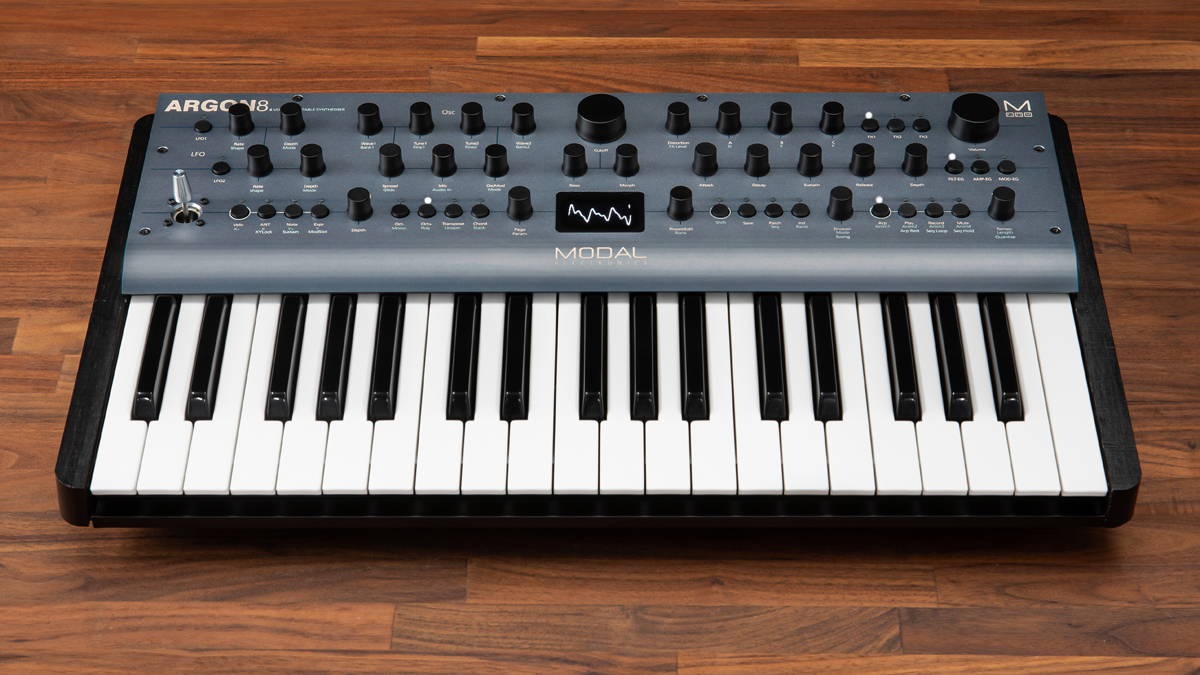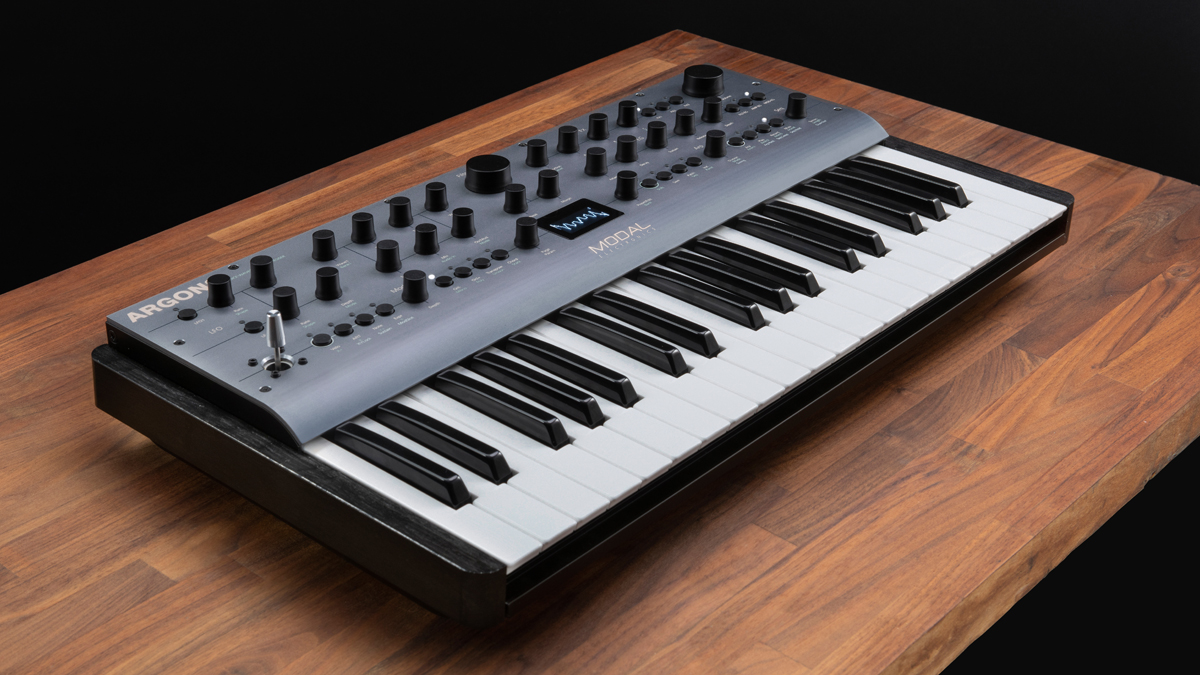Modal Electronics’ Argon8 is an affordable wavetable synth with high-end heritage
It inherits sound design features and functionality from the Modal 002

Modal Electronics has taken the DNA of its $4,495 Modal 002 wavetable synth and packed it into the Argon8, a new synth that costs a far more affordable $699/£579/€649.
This slick-looking machine offers eight voices of polyphony and is packed into a steel and aluminium chassis. It comes with 37 velocity-sensitive full-size keys with aftertouch, and a multitude of sound design features.
Despite its 002 heritage, Modal says that the Argon8 has a completely new sound engine that’s capable of complex synthesis. It also has a class-compliant USB connection, enabling you to use it as part of an integrated setup, and there’s a free software editor for desktop and mobile platforms.
Find out more on the Modal Electronics website. The Argon8 will be available later this year.

Modal Electronics Argon8 features
- True 8 voice polyphony
- Road ready Steel and Aluminium chassis
- 120 carefully crafted wavetables split into 24 banks of 5 morphable waveform sets, covering virtual analogue classics through to cutting edge EDM and many from the original Modal 002 as well as a whole range of mathematically generated tables. Additional PWM bank and 4 noise/modulation banks accessible on Oscillator 2
- 28 static wavetable processors including de-rez, wave folders, wave shapers, phase shapers and rectify that can be applied to the 120 wavetables to give a mind boggling array of permutations and new waveshapes
- 32 high resolution wavetable oscillators, 4 per voice, with 8 types of oscillator modifier including: Phase Mod (FM), Ring Mod, Amp Mod, Hard Sync and Windowed Sync
- FATAR TP9/S Full size 37 key keybed with both velocity and aftertouch
- 1.54 inch large OLED display – that provides instant visual feedback to the user at all times of playing/editing
- Bourns continuous rotary encoders throughout as standard
- A 4-axis joystick that can be assigned to a huge range of modulation destinations and virtually ‘locked’ when desired
- Three dedicated envelope generators for AMP, MOD and FILTER that can be accessed independently or all three simultaneously including negative (reverse) versions.
- Two pole morphing resonant filter
- Waveshaping distortion
- Three incredibly powerful independent and user configurable stereo FX engines that can create sophisticated Delays, lush Reverbs, Flanging, Phasing, and Rich Choruses
- Glide/Portamento with both legato and staccato modes
- Hugely powerful “Mod Matrix” with eight assignable slots with four additional fixed routes, 11 mod sources and 52 destinations
- 500 patch memories, all fully editable and ships with 300 factory programs and 200
- user patch spaces. Patch upload and download through the free MODALapp
- Two Audio rate LFO’s with tempo sync (one poly, one global). Polyphonic LFO can sync to frequency divisions
- Inbuilt sophisticated programmable arpeggiator of 32 steps with rest capability with up to 2048 steps before repeating
- Real time sequencer with number 512 steps with input quantise and four recordable/editable animations
- Multiple keyboard modes, Mono, Poly, Unison 2, unison 4, unison 8, Stack 2 and Stack 4
- All time-based FX, LFO’s and sequencer arpeggio can be either clocked internally or externally
- Sync in/out
- Full size MIDI five pin din sockets
- Full size quarter inch jacks for both audio and external control such as sustain and expression.
- 3.5 mm stereo input with ability to route incoming audio through the FX
- Free dedicated app that works on Mac, PC, iOS, Android and works under VST3 and AU.
Get the MusicRadar Newsletter
Want all the hottest music and gear news, reviews, deals, features and more, direct to your inbox? Sign up here.



I’m the Deputy Editor of MusicRadar, having worked on the site since its launch in 2007. I previously spent eight years working on our sister magazine, Computer Music. I’ve been playing the piano, gigging in bands and failing to finish tracks at home for more than 30 years, 24 of which I’ve also spent writing about music and the ever-changing technology used to make it.
“Excels at unique modulated timbres, atonal drones and microtonal sequences that reinvent themselves each time you dare to touch the synth”: Soma Laboratories Lyra-4 review
e-instruments’ Slower is the laidback software instrument that could put your music on the fast track to success









